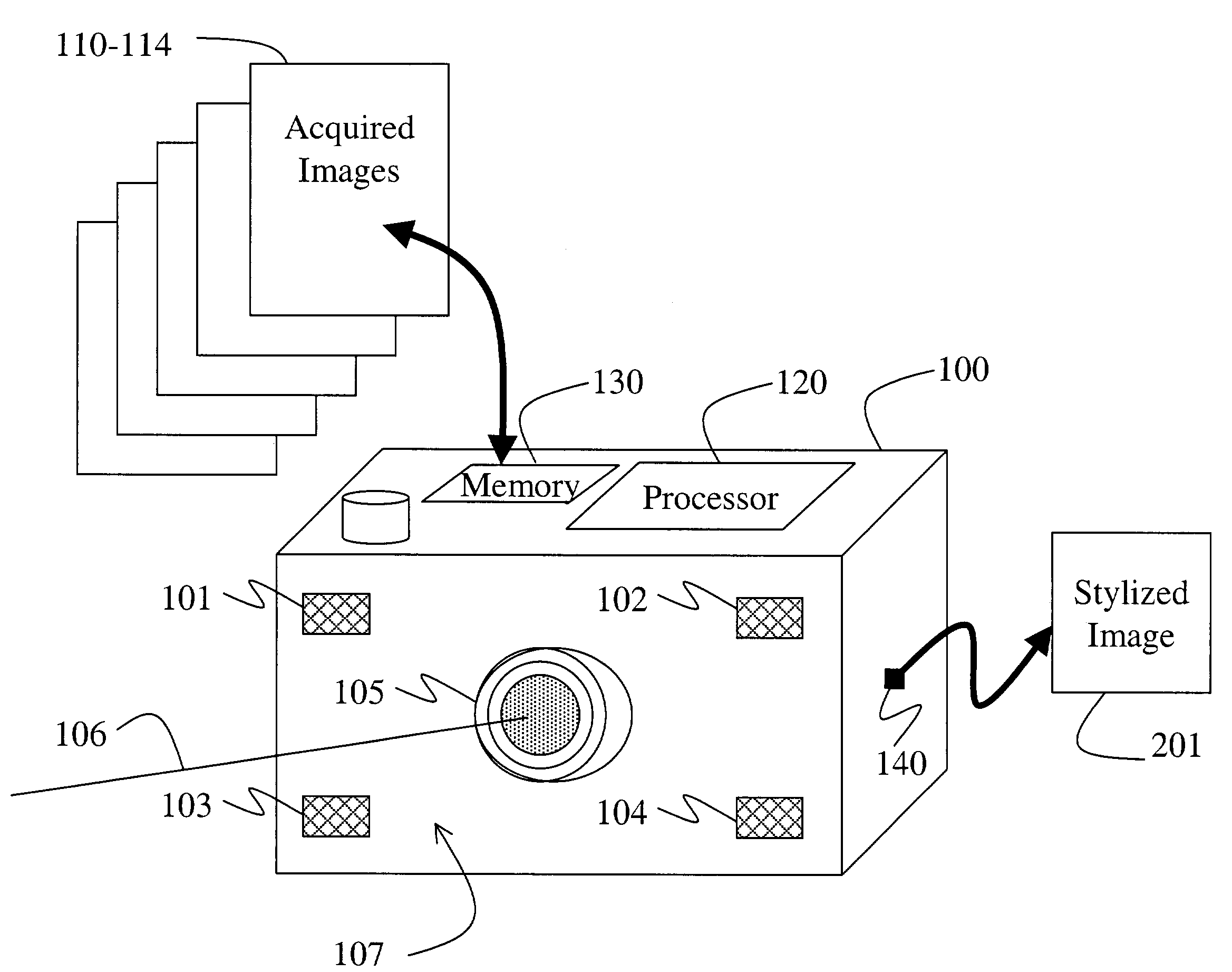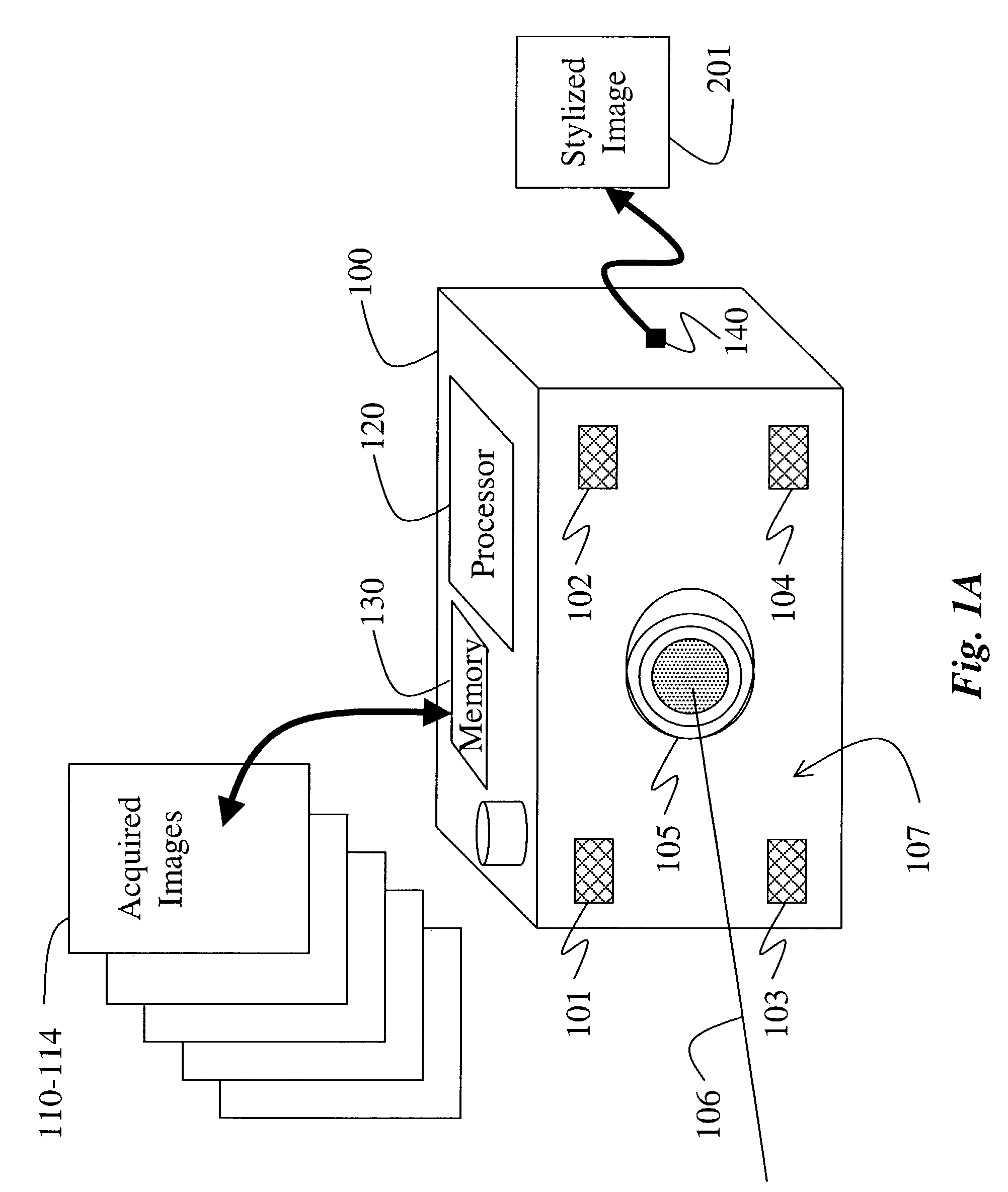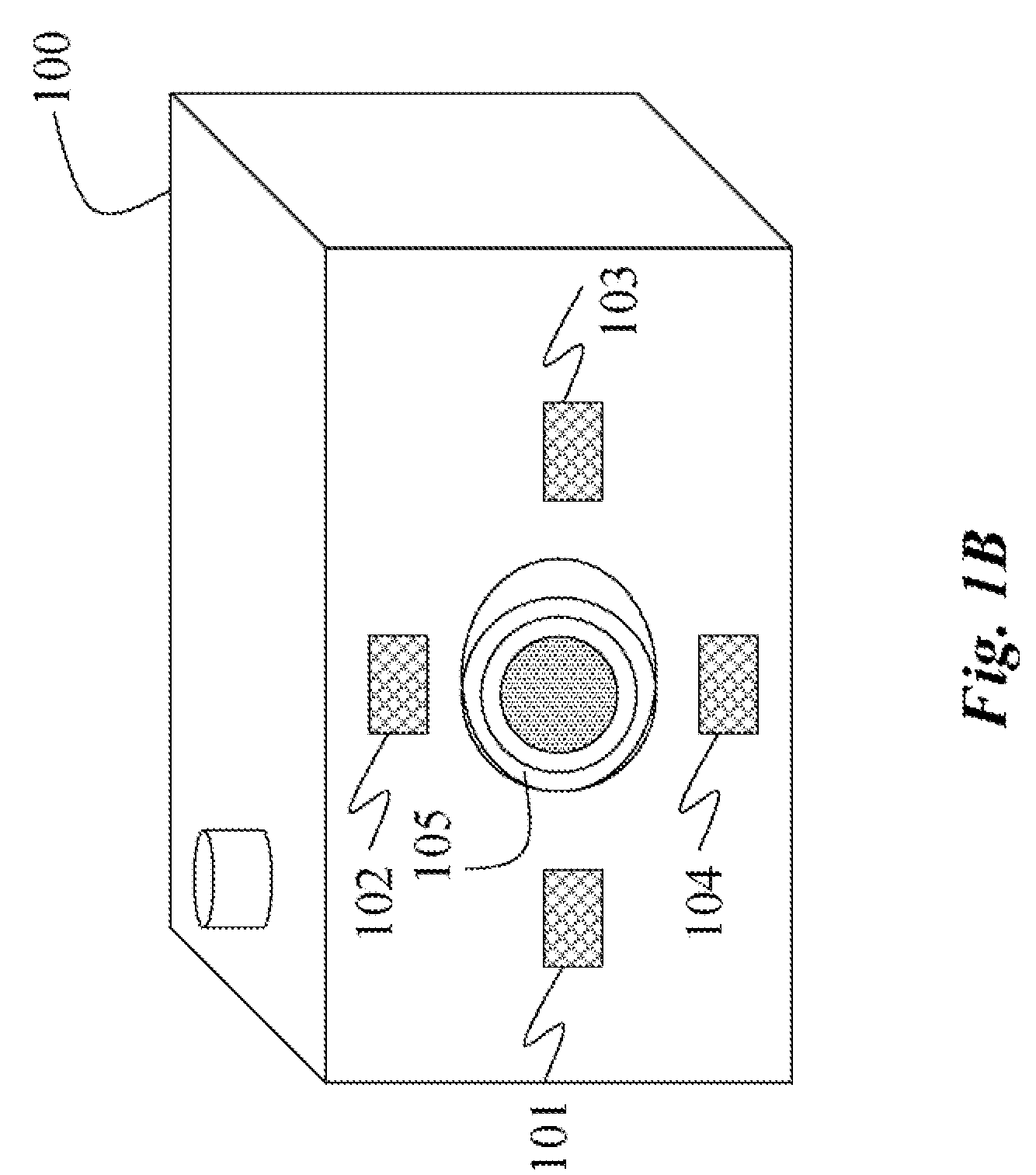Non-photorealistic camera
- Summary
- Abstract
- Description
- Claims
- Application Information
AI Technical Summary
Benefits of technology
Problems solved by technology
Method used
Image
Examples
Embodiment Construction
[0038]NPR Camera
[0039]FIG. 1A shows a digital camera 100 for generating non-photorealistic (NPR) images according to our invention. The camera 100 includes a plurality of flash units 101-104, and a single lens 105. The flash units 101-104 are distributed around a center of projection (COP) 106 of the lens 105. For best results, the flash units are placed as close to the COP as possible. Therefore, it makes sense to have the flash units mounted on a front surface 107 of the camera. The flash units can be distributed evenly around the COP.
[0040]In an optimal configuration shown in FIG. 1B, the flash units 101-104 are operated in left-right and top-bottom pairs. This allows pixels in images 110-114 to be imaged for at least five lighting conditions, no shadows under ambient lighting and no flash, and bottom, top, left, and right shadows. Thus, neighboring pixels are shadowed at least in one image, and not shadowed in at least one other image.
[0041]This configuration also makes an epipo...
PUM
 Login to View More
Login to View More Abstract
Description
Claims
Application Information
 Login to View More
Login to View More - R&D
- Intellectual Property
- Life Sciences
- Materials
- Tech Scout
- Unparalleled Data Quality
- Higher Quality Content
- 60% Fewer Hallucinations
Browse by: Latest US Patents, China's latest patents, Technical Efficacy Thesaurus, Application Domain, Technology Topic, Popular Technical Reports.
© 2025 PatSnap. All rights reserved.Legal|Privacy policy|Modern Slavery Act Transparency Statement|Sitemap|About US| Contact US: help@patsnap.com



